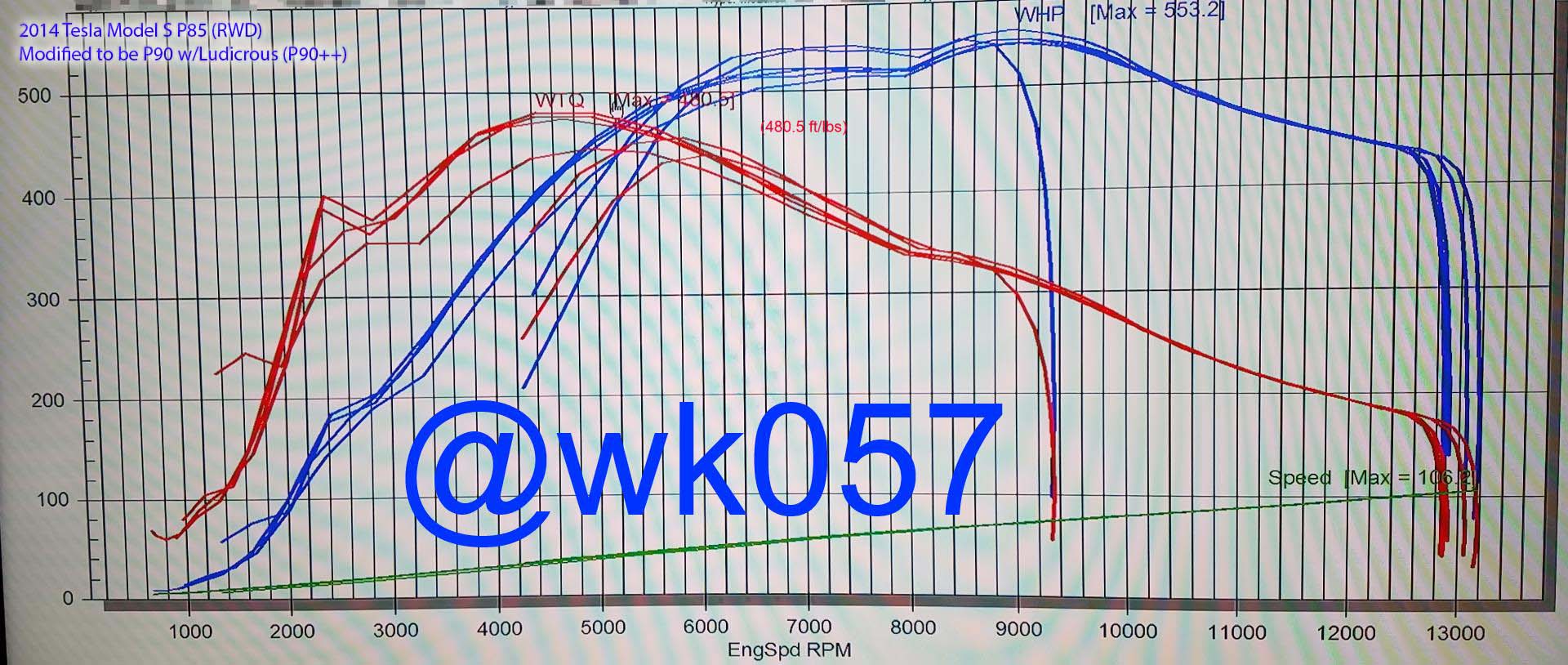You're welcome to stop over for a demonstration ride.

Dyno wasn't compensating for anything, and values match pretty closely with data from CAN logs. You can also validate the numbers a bit from the graphs. For example, consistently the car was at about 320 ftlbs of torque at ~9000 RPM, so plug that into HP=(TorqueFtLbs*RPM)/5252 and you get 548 HP. And that's just an estimate eyeballing the graph.
The car has a 90 kWh pack with the Ludicrous upgrade (pyro fuse) which allows it to output up to 1520A. I'm pushing just over 1400A to the rear motor currently. P85 normally does 1050-1100A max. P85D does 1300A,
PxxD does 1500A. Input power vs output power had me in the upper-80s% efficient, off the top of my head (not actually looking at the data right this second).
Can see the slow-refresh diag screen peak at 1417A in this one video I posted of a dyno pull.
I also recently street raced a P85D non-Ludicrous with this car from a stop to about 90 MPH. Was spur of the moment, so no logging equipment or max battery power or anything. P85D's traction helped at launch, but I was nearly two lengths ahead of him by the time we let off. Those extra 100 amps, plus not dragging around a second motor, make a huge difference after the initial launch. Pretty sure if this was taken out to a full 1/4 mile I'd have beaten the P85D by several tenths or more.
I've made a few more tweaks to the car since my last update here, also. I bumped the max current up a few more notches to hold high torque for a little longer as well as bumped max torque a little. I can get close to 100kW regen now with some pretty high regen torque when the pack can handle it... which has improved my overall efficiency significantly since I almost
never use the brakes in this car anymore except to hold at a standstill. Recently did a 242 mile stretch on a single charge at ~288 Wh/mi average with an average speed of 72 MPH (max about 85 MPH).
Unfortunately I've damaged the rear halfshafts/CV joints when tinkering with the higher torque output, so, going to have to replace those... hopefully with something stronger.



